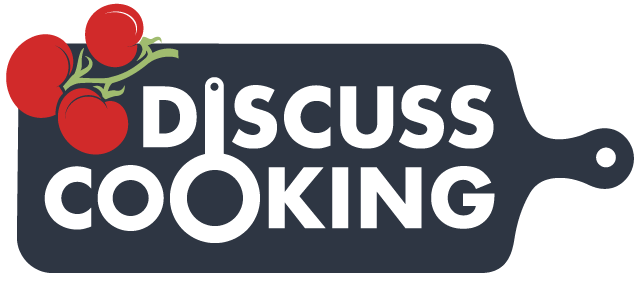Based on your email perhaps you can help me. I've made this white cake several times per ingedients, but yesterday I decided to use 1/2 c. Lard instead of 1/2c. of Crisco. This is just a basic white cake, but this time it's dry. I was trying to get away from Crisco but now wonder if I had used 1/4 c. of vegetable oil and 1/4 c. of lard would that have made my cake moist. I'm not a health nut, but would like to find a reliable substitute for Partially Hydrogenated. With Kind Regards; Champ
You are using an out of date browser. It may not display this or other websites correctly.
You should upgrade or use an alternative browser.
You should upgrade or use an alternative browser.
Shortening, Lard, Oil
- Thread starter C.Whalen
- Start date
The friendliest place on the web for anyone that enjoys cooking.
If you have answers, please help by responding to the unanswered posts.
If you have answers, please help by responding to the unanswered posts.
Different fats behave in different ways in baking - which is why different fats are used for different reasons. All of the ingredients in a baking recipe are formulated to work together to achieve a certain end result - like moistness, texture, density, airiness, flavor, etc. Changing the fat can cause problems as you have already noticed - mixing oil and lard would definitely cause even more problems.
NEW CRISCO is not partially hydrogenated. It is two fats, cottonseed oil and something else. One is fully hydrogenated (hard as wax, and safe) and the other is kept liquid, then the two are blended. It is a little stiffer than the original crisco, but works just fine and has no trans fats.
So how can you get around using Crisco - Partially Hydrogenated, or is it simply not possible?
What is your reason for not wanting to use Crisco?
Partially Hydrogenated fats are very unhealthy. This product was not created until 1911 to be a cheap replacement for lard and butter. Plus, it had the added benefit of lasting a whole year. Now this product still has P.H. but has no trans-fats - go figure that one. Perhaps they use to work in government accounting. So, I'm encouraged, and will go back and test lard & butter both melting,and various basic recipes etc . .. Additionally, I need to test my oven. To be honest I am a server critic, tonight my husband came home and loved the cake and has a fairly sophisticated palate. So, we'll see I think it may have been the oven. This is the first cake I've baked in this house, as people seem to be afraid to eat cake anymore but perhaps that is changing. Afterall, we have a cupcake store and they are opening a second location.
But, thank you both for your assistance and I'm going to test my oven at various points.
But, thank you both for your assistance and I'm going to test my oven at various points.
Ok, I'll admit that I'm a little surprised that EVOO has such a high smoke point. For some reason, I always assumed that like raw butter, it was just useless for anything beyond sautee / pan frying.
But that said, why would you ever use EVOO for deep frying? Even the supermarket EVOs are expensive. It must cost a fortune to deep fry with that stuff.
But that said, why would you ever use EVOO for deep frying? Even the supermarket EVOs are expensive. It must cost a fortune to deep fry with that stuff.
Billdolfski
Senior Cook
I've seen ppl do it for fat reasons, but the flavor is way too distinctive.
Ok, I'll admit that I'm a little surprised that EVOO has such a high smoke point. For some reason, I always assumed that like raw butter, it was just useless for anything beyond sautee / pan frying.
But that said, why would you ever use EVOO for deep frying? Even the supermarket EVOs are expensive. It must cost a fortune to deep fry with that stuff.
Lard comes in two forms basically - solid sold in 1-lb boxes that has to be refrigerated, and creamy sold in tubs on the shelves and does not need to be refrigerated. Which are you using CHAMP?
Yes, there is some "government math" involved. It involves serving sizes, and how things are rounded. Have you noticed that things that claim to be trans fat free say "0 grams" - not "0%"? As long as something contains less the 0.5g of something per serving - it can be rounded down to 0. If a serving size is the typical Tablespoon (12-13g) and has 0.49g trans fat, it can be labeled as 0g - rounding up is optional - not mandatory.
FWIW: butter, milk, cheese and the fat on a piece of beef/lamb also contains trans fat.
Yes, there is some "government math" involved. It involves serving sizes, and how things are rounded. Have you noticed that things that claim to be trans fat free say "0 grams" - not "0%"? As long as something contains less the 0.5g of something per serving - it can be rounded down to 0. If a serving size is the typical Tablespoon (12-13g) and has 0.49g trans fat, it can be labeled as 0g - rounding up is optional - not mandatory.
FWIW: butter, milk, cheese and the fat on a piece of beef/lamb also contains trans fat.
Last edited:
Similar threads
- Replies
- 26
- Views
- 769
- Replies
- 6
- Views
- 318
- Replies
- 1
- Views
- 316
